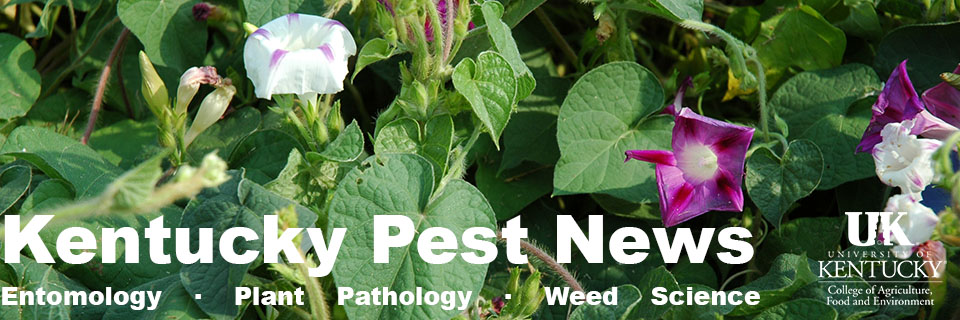Many wheat producers in the state have already sprayed a fungicide to help protect against Fusarium head blight (scab). However, some fields in the state were just nearing the beginning flowering stage (Feekes growth stage 10.51) when the May 9th freeze hit. Producers with these fields may have held off on spraying a fungicide to determine how much freeze damage had occurred in their wheat fields. Now that freeze damage may be apparent in these fields, producers must now make a fungicide application decision.
Since freeze damage can vary from field to field, these decisions must be made on a field-by-field decision. If freeze damage is severe, then applying a fungicide at this point, may not be worth the cost. For more information on how to assess wheat for freeze damage, please see this article: https://www.kygrains.info/blog/2020/5/18/assessing-wheat-freeze-in-kentucky. Below are some considerations from a disease control perspective:
- Many parts of Kentucky have had a medium to high risk of Fusarium head blight (scab) up through the last few weeks (see the risk map at: http://www.wheatscab.psu.edu/) for susceptible varieties. However, risk on moderately-susceptible and moderately-resistant varieties have been low to medium.
- Wheat heads are susceptible to infection by the Fusarium head blight fungus from beginning flowering through soft dough
- In multi-state research studies funded by the U.S. Wheat and Barley Scab Initiative, effective fungicides tested have shown efficacy against Fusarium head blight and deoxynivalenol (DON; vomitoxin) contamination when applied up to around 7 days after the Feekes 10.51 growth stage
- When making a fungicide application after the Feekes 10.51 growth stage, be sure to check the label for the pre-harvest interval (PHI). The PHI for different fungicides that have efficacy against Fusarium head blight are listed below:
- Caramba = do not apply within 30 days of harvest
- Miravis Ace = do not apply after full head emergence (Feekes 10.54)
- Prosaro = do not apply within 30 days of harvest
- Proline = do not apply within 30 days of harvest
- Tebuconazole products = do not apply within 30 days of harvest
For more information about fungicide control of Fusarium head blight, please see “Optimizing fungicide use for Fusarium head blight (scab) and associated mycotoxins” on the Crop Protection Network (https://crop-protection-network.s3.amazonaws.com/publications/cpn-3001-wheat-optimizing-fungicide-use-for-fusarium-head-blight-scab-and-associated-mycotoxins.pdf).
By Carl A. Bradley, Extension Plant Pathologist
